|
Circa 1996
A deep longing for spring hits you while walking down the Indianapolis HomeShow aisles. At the sight of bright blooming tulips, daffodils, and crocuses winter can be forgotten for a minute. But flowers are not too happy peaking out before the spring thaw and landscapers have to encourage them to bloom early. With a few helpful tips you can force bulbs to produce a springtime display in your own home.
0 Comments
Purple Fountain Grass
(Pennisetum setaceum) One of the most fuss-free ornamental grasses is Purple Fountain Grass. Rich, purple-red, finely textured foliage is topped by dark-red fuzzy flower spikes that resemble fox-tails. This grass is indigenous to Africa and provides contrast with green or gray-leafed grasses and perennials. Soil: Well-drained, moist soils Light: Full-sun, drought hardy Uses: Fountain grass makes a beautiful specimen plant for foundations, borders, rock gardens, or accent beds. Circa 1996 - Mark Reynold, Landscape Architect Our third President was a veritable renaissance man, a genius who achieved noteworthiness at all her attempted. Farming, architecture, music, classical literature all captured his spirit at one time or another yet many Jefferson scholars concur that gardening was his strongest passion. He is also known as one of our country's first landscape architects. He read current books and philosophies on the trends, visited European landscapes and developed the grid system of land division for our continent. His home that he designed, Monticello, was a grand experiment, a place for Jefferson to apply his theories as he wished. Jefferson was born into the plantation life of rural colonial Virginia. Growing up, his father taught him the skills of surveying, map-making, and topography interpretation. Later he inherited surveying and drafting equipment that are still on display today at Monticello. In 1768, he chose the site for Monticello. It was on the Rivanna River, an estate of 2,650 acres, site of his previous home, Shadwell. Shadwell burned, and Jefferson did not regret it, for it had been of traditional colonial style, not to his taste. Highly critical of architecture, Jefferson felt the chief merit for architecture in Williamsburg was that it would burn easily. At Monticello he used classical instead of colonial design, but his most radical concept involved development of the land. In the words of Alexander Pope, he " consulted the genius of the place" to determine the natural advantages of the site. Most notably, the house was to be set on a mountaintop and utilize the grand view. This was a move forward toward the more philosophical and romantic styles currently in European vogue. It was a move away from symmetry and geometry that most Americans were still employing. In 1769 the mountaintop was leveled and trees were set out even before the house was started. In 1772 the "roundabouts" were begun. Another innovative idea, Jefferson designed a series of roads to circumnavigate the mountaintop solely to enjoy the woods and the view. In 1774, Jefferson layed out his vegetable garden on the south slope, with the orchard and vineyard on the terrace below. Jefferson used the orchard to organize the hillside and act as a natural transition to the woods below. Circa 1996
Circa 1996
Purple Wintercreeper ( Euonymus fortunei coloratus ) Introduced into the United States in 1914 from Japan, Purple Wintercreeper is a very versatile and hardy ground cover. In the winter this evergreen's dense carper of plum-purple provides a contrast of color and texture. Purple Wintercreeper is good for rambling over tree stumps and barren rocky spots. Purple Wintercreeper requires very little maintenance. Soil: Almost any, wet or dry, well-drained Light: Full Sun or Light Shade Pruning: May be done at anytime, responds well to shearing Uses: Low hedge, ground cover, vine, foundation plantings, controls erosion on steep banks. Circa 1996
What do pines, eucalyptus, magnolias, spruces and azaleas have in common? They are all part of the evergreen family. An evergreen is a plant that holds its foliage even when it is dormant, or resting, in winter. They are very hardy plants that can be grown anywhere in the United States. Evergreens require very little maintenance other than pruning occasionally to keep their shape and size. They are resistant to most insects and diseases and are the perfect answer to a lot of landscaping problems. There are two classes of evergreens. The narrow-leaved evergreens with needle-like leaves, include pines and spruces. They are also known as conifers because they carry their seed in cones. Conifers thrive in cold climates because their needles lose moisture at a slow rate during cold weather. Conifers include a few that aren't evergreens such as larch, bald cypress and dawn redwood. They lose needles each fall like oaks and maples and are called deciduous conifers. Broad-leaved evergreens whose leaves are wider, are found mostly in the south and include such plants a rhododendrons and magnolias. These evergreens do better in warm areas where moisture is more available and there is no frost. Evergreens serve many purposes. They shield homes from winter winds while shading from summer sun. They flourish in places where grass won't grow. Evergreens act as a screen for headlights and noise. They also add interest to a landscaped area. Not all evergreens are green. Depending on age, variety and season they can be shades of yellow, blue, gray, bronze, or deep purple. Berries and pine cones also add interest and color to a bleak winter day. Evergreens give landscapes a richness, a warmth, an elegance, and an assurance that spring with return someday soon. Circa 1996 - Phil Wolski, Vice President Have you ever caught yourself wondering what is in a bag of fertilizer and what it does for your lawn? Your lawn feeds itself by converting the energy contained in sunlight to forms that can be utilized by life on this planet. This complex process is known as photosynthesis. As part of that process your lawn requires certain nutrients some of which come form the air, some from water, and some from the soil. Generally speaking, our yards are deficient of the base minerals to make our lawns look healthy. These deficiencies can be neutralized by regularly fertilizing your yard. The primary mineral; nitrogen is essential for a green stand of grass. Nitrogen is very soluble in water and is often deficient in most soils. It is also absolutely essential for plant growth. By adding it to our soils on a regular basis, we ensure that our lawns have what they need to grow and thrive. The second primary mineral for a good stand of grass is phosphorus. Phosphorus promotes good seed development and a healthy root zone. The third primary mineral in a standard bag of fertilizer is potassium. Potassium is vital to preventing various diseases. These are simple "rules of thumb" definitions but generally accurate explanations why fertilizing your lawn is important. |
AuthorsCurrent and former staff members have contributed to our newsletter over the years. Now the articles are available to view here on our blog Categories
All
|
© 2024 Ski Landscape Corporation - Website by Day Design

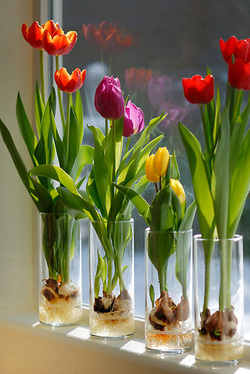
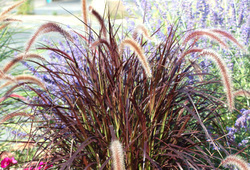
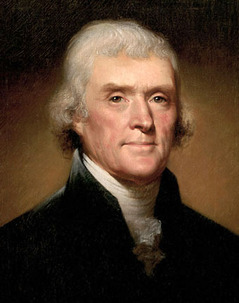

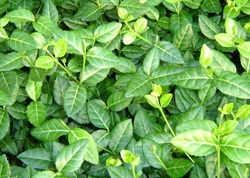
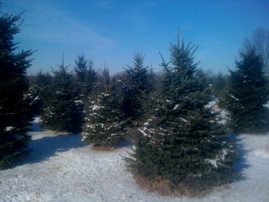
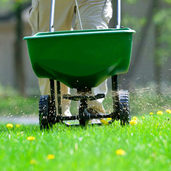
 RSS Feed
RSS Feed